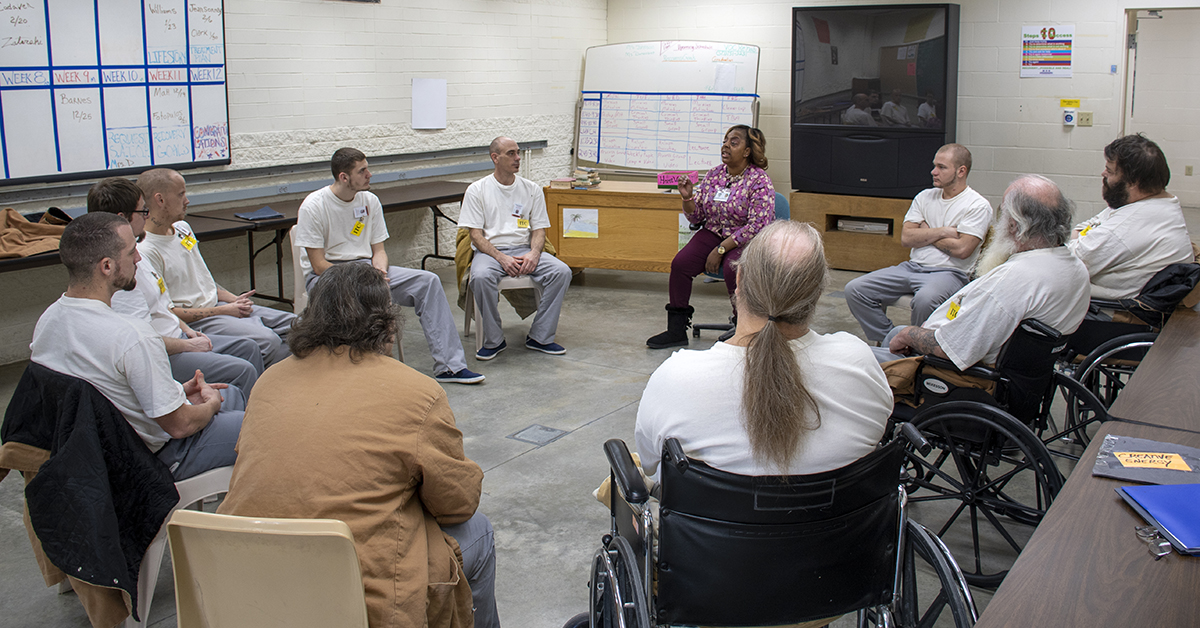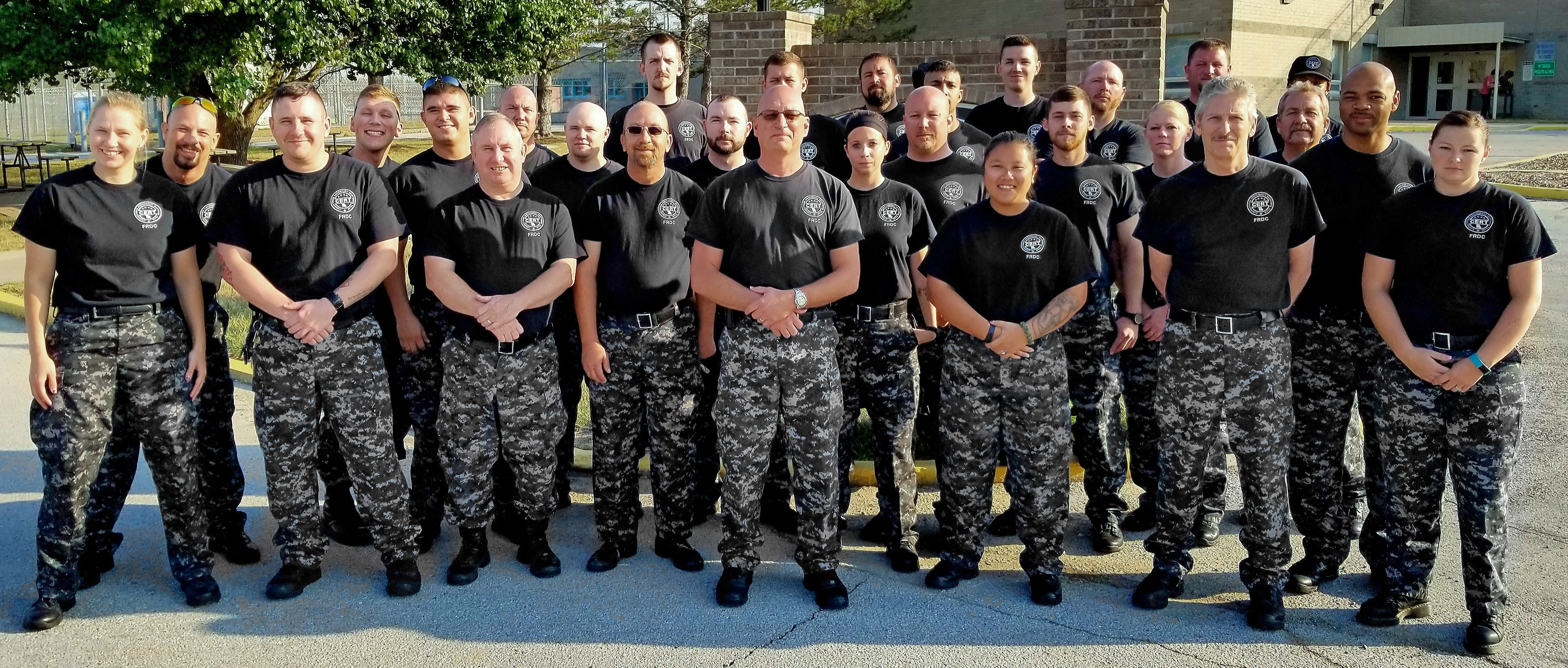Substance misuse is a national problem that disproportionately affects the incarcerated population. National Institute on Drug Abuse research shows 65% of people in U.S. prisons have active substance use disorders. Approximately 88% of people in Missouri prisons report having engaged in substance misuse during the year preceding incarceration.
The Missouri Department of Corrections aims to combat drug misuse in prison by exploring not only how but also why illegal substances get into correctional centers. We’re addressing:
- Demand for drugs
- Supply of drugs
- Response to drug use
Why do illegal drugs get into prisons?
Because there are people in prison who will take big risks to get them.
Addiction is at the core of the national drug misuse epidemic, inside and outside correctional centers. As part of our mission of improving lives for safer communities, the department facilitates substance use disorder treatment to lead Missourians toward drug-free lives.
WHAT WE’RE DOING TO HELP:
Treatment, Counseling & Support
In a proactive collaborative approach including corrections staff, community volunteers, and treatment providers such as Corizon Health and Gateway Foundation, corrections facilities offer:
- Treatment referrals
- Cognitive-behavioral interventions for substance abuse (CBI-SA)
- Addiction counseling
- 12-step programs such as Alcoholics Anonymous and Narcotics Anonymous
- Intensive therapeutic communities whose residents commit to lifestyle changes
- 10 institutional treatment centers providing substance use treatment to more than 2,500 Missourians
Treatment Centers
- Boonville Treatment Center: men’s 60-bed unit, Boonville Correctional Center, Boonville
- Chillicothe Women’s Treatment Center: women’s 200-bed unit, Chillicothe Correctional Center, Chillicothe
- Cremer Therapeutic Community Center: men’s 180-bed unit, Cremer Therapeutic Community Center, Fulton
- Farmington Treatment Center: men’s 324-bed unit, Farmington Correctional Center, Farmington
- Fulton Ambulatory: men’s 15-bed unit, Fulton Reception and Diagnostic Center, Fulton
- Maryville Treatment Center: men’s 525-bed unit, Maryville Treatment Center, Maryville
- Northeast Treatment Center: men’s 62-bed unit, Northeast Correctional Center, Bowling Green
- Ozark Treatment Center: men’s 650-bed unit, Ozark Correctional Center, Fordland
- Western Reception Regional Treatment Center: men’s 320-bed unit, Western Reception, Diagnostic and Correctional Center, St. Joseph
- Women’s Eastern Treatment Center: women’s 240-bed unit, Women’s Eastern Reception, Diagnostic and Correctional Center, Vandalia
How do illegal drugs get into prisons?
Through people who will take big risks to deliver them.
There is no magical force field around a correctional center. A prison is like a small city, and its ordinary functioning requires that people and objects from the outside to go in and out of the gates every day. Sometimes people attempt contraband deliveries during these exchanges. Family and friends try to pass contraband to offenders during visits. Acquaintances try to mail illegal drugs to offenders, sometimes inside envelopes and sometimes embedded in stamps or paper. Dealers try to launch contraband into prisons using catapults or drones or to smuggle them in through food service or laundry. Acquaintances try to supply contraband to offenders on work release. In some cases, even our own staff or volunteers have attempted to bring contraband into facilities. Some of these attempts are successful.
WHAT WE’RE DOING TO HELP:
Security
There is no single, simple solution to the problem of drug use in the incarcerated population. Contact with friends and family through visits and mail is a vital component of offender rehabilitation; at the same time, each contact presents the possibility that contraband could be introduced to the population. Physician-prescribed medications are essential to the well-being of offenders with medical conditions, but each prescription introduces a drug to the prison. The department works hard to find a balance between providing necessary services and controlling potential risk. We conduct or have implemented:
- Routine searches
- Visitor screenings
- Staff screenings
- Changes in entry search stations to ensure procedure consistency and limit facility access
- Corrections Emergency Response Team (CERT) unannounced facility searches
- Unannounced searches with K9 detection dogs
- Work-release offender searches
- Urinalysis testing
- Security intelligence analysis
- Institutional security audits
- Centralized security intelligence unit
- Mail searches
- Offender tablet program, facilitating email communication and reducing paper mail
The department also is exploring:
- Changes to offender mail procedures
- Enhanced screening processes
Education & Awareness
The department trains staff to identify the presence of drugs and respond to drug use and also educates offenders about the drug use dangers and recognizing signs of an overdose. Resources include:
- Staff emergency response training
- Staff drug prevention workshops
- Staff informational campaigns
- Offender awareness campaigns



